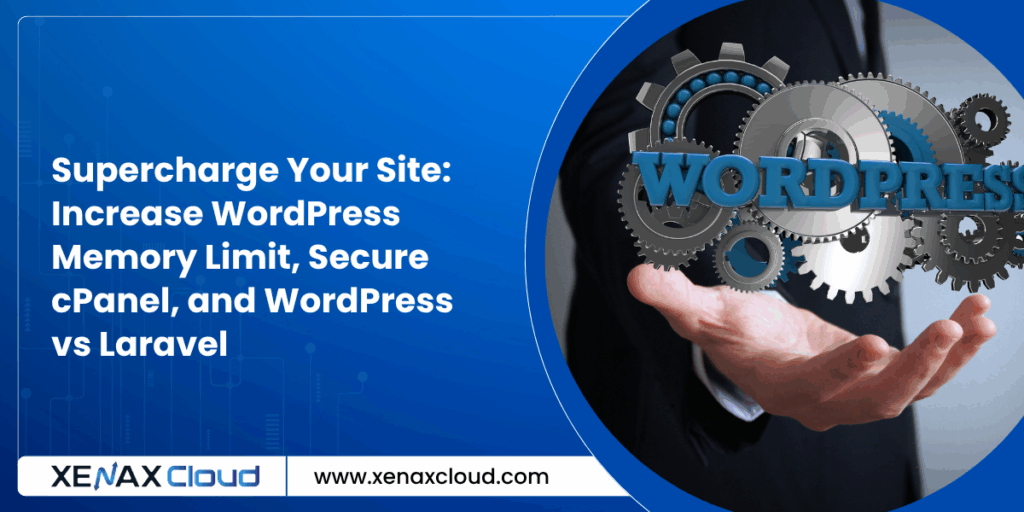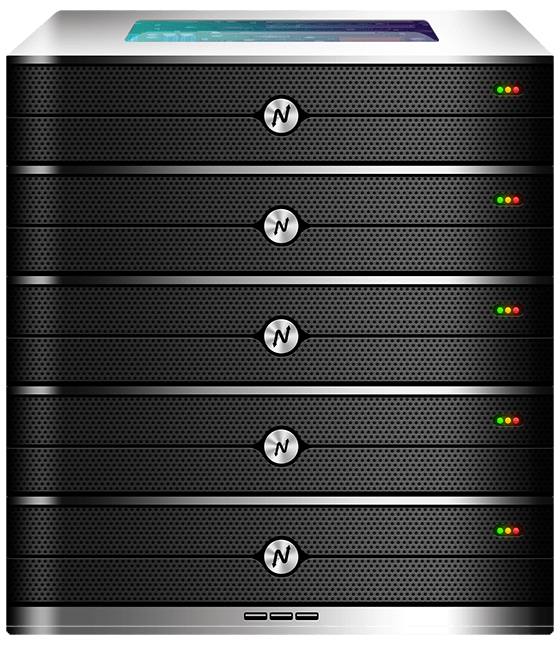Building a high-performing, secure website is essential in today’s digital world. At XenaxCloud, we provide cutting-edge hosting solutions, including shared hosting, VPS, RDP, dedicated servers, domains, and reseller hosting, all hosted in our state-of-the-art India-based data center. This article dives into how to increase memory limit in WordPress, guides you on how to change the cPanel password, and compares WordPress vs Laravel to help you optimize and secure your website.
Why Increase Memory Limit in WordPress?
WordPress powers millions of websites, but resource-heavy themes, plugins, or large media files can lead to performance issues or errors like “Fatal Error: Allowed Memory Size Exhausted.” To increase memory limit in WordPress, you can enhance your site’s speed and reliability, especially on shared hosting or VPS plans. Here’s how to do it.
Steps to Increase WordPress Memory Limit
- Edit the wp-config.php File:
- Access your WordPress root directory using cPanel File Manager or RDP.
- Locate wp-config.php and add the following line before “/* That’s all, stop editing! */”:
- define(‘WP_MEMORY_LIMIT’, ‘256M’);
- Save the file to set the memory limit to 256MB, adjustable based on your hosting plan.
- Modify the php.ini File:
- For users on VPS or dedicated servers, access php.ini via cPanel or SSH.
- Change memory_limit = 64M to memory_limit = 256M.
- Save and restart the server if necessary.
- Update the .htaccess File:
- If php.ini access is restricted, edit .htaccess in the WordPress root directory.
- Add:
- php_value memory_limit 256M
- Save the file, ideal for shared hosting users.
- Contact XenaxCloud Support:
- If issues persist, our India-based support team can assist, ensuring seamless performance for reseller hosting or other plans.
Pro Tip: For resource-intensive sites, consider upgrading to a VPS or dedicated server to support higher memory limits and ensure optimal performance.
How to Change the cPanel Password for Enhanced Security
Securing your hosting account is critical to protect your website, data, and domains. Knowing how to change the cPanel password ensures your account remains safe from unauthorized access. cPanel, included with XenaxCloud’s shared hosting and reseller hosting, makes this process quick and easy.
Steps to Change Your cPanel Password
- Log in to cPanel:
- Access cPanel through your XenaxCloud client area or directly via yourdomain.com/cpanel.
- Go to Password & Security:
- In the cPanel dashboard, find the “Preferences” section and click “Password & Security.”
- Update Your Password:
- Enter your current password, then input a new, strong password (combine letters, numbers, and symbols).
- Confirm the new password and click “Change Password.”
- Use the Client Area:
- Alternatively, log in to your XenaxCloud client area, navigate to “Services” > “Manage Hosting,” and select “Change Password.”
Security Tip: Use a password manager to store your credentials securely and enable two-factor authentication (2FA) for added protection. XenaxCloud’s India-based servers ensure secure, reliable cPanel access.
WordPress vs Laravel: Choosing the Right Platform
Selecting the best platform for your website is a pivotal decision. The WordPress vs Laravel comparison highlights their strengths and weaknesses, helping you choose based on your project’s needs, whether hosted on shared hosting or dedicated servers.
WordPress: The Go-To CMS for Simplicity
WordPress is a user-friendly content management system (CMS) powering over 40% of websites. It’s perfect for blogs, small businesses, and e-commerce sites.
Advantages of WordPress:
- Ease of Use: No coding skills needed, ideal for beginners.
- Extensive Plugins: Thousands of plugins and themes for customization.
- SEO Optimization: Tools like Yoast boost search engine rankings.
- Community Support: Vast resources for troubleshooting.
Disadvantages:
- Limited flexibility for complex, custom applications.
- Heavy plugin usage may require you to increase memory limit in WordPress.
Laravel: The Developer’s Choice for Custom Solutions
Laravel is a PHP framework for building scalable, custom web applications, ideal for developers needing advanced functionality.
Advantages of Laravel:
- Customizability: Perfect for complex projects like CRMs or custom e-commerce platforms.
- Performance: Lightweight and optimized for speed.
- Security: Includes CSRF protection and encryption.
- Scalability: Handles high-traffic applications efficiently.
Disadvantages:
- Requires coding expertise, less beginner-friendly.
- Longer development time compared to WordPress.
WordPress or Laravel: Which Fits Your Needs?
- Choose WordPress for quick setups, content-driven sites, or reseller hosting clients needing easy management.
- Choose Laravel for custom, scalable applications, best suited for VPS or dedicated servers.
XenaxCloud’s India-based data center supports both platforms with high-speed, secure hosting tailored to your goals.

FAQs
1. Why do I need to increase the memory limit in WordPress?
Increasing the WordPress memory limit resolves errors caused by resource-heavy plugins or themes, ensuring faster loading times and better performance on shared hosting or VPS.
2. How often should I change my cPanel password?
Change your cPanel password every 3–6 months or immediately if you suspect a security breach. Use a strong password and enable 2FA for added security.
3. Can I use both WordPress and Laravel on the same server?
Yes, with a VPS or dedicated server, you can run both platforms, leveraging XenaxCloud’s India-based infrastructure for optimal performance.
4. Is WordPress or Laravel better for SEO?
WordPress has built-in SEO tools and plugins, making it easier for beginners. Laravel requires manual SEO optimization but offers greater flexibility for custom solutions.
5. How does XenaxCloud support WordPress and Laravel hosting?
XenaxCloud offers optimized shared hosting, VPS, and dedicated servers with India-based servers, ensuring fast, secure hosting for both platforms.
Conclusion
Optimizing and securing your website is key to success. By learning how to increase memory limit in WordPress, mastering how to change the cPanel password, and understanding the WordPress vs Laravel debate, you can make informed decisions for your online presence. With XenaxCloud, our India-based hosting solutions, including shared hosting, VPS, RDP, dedicated servers, domains, and reseller hosting, empower you to build, manage, and scale your website with ease. Supercharge your site with XenaxCloud today!






